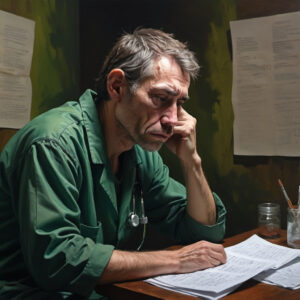
What is Monkeypox? Monkeypox Outbreak
Monkeypox outbreaks, characterized by sudden increases in the number of cases, occur when the virus spreads rapidly within a population. Historically, these outbreaks have been confined to Central and West Africa, where the virus is endemic among wildlife. However, recent years have seen an expansion beyond these regions, raising global health concerns.
The initial signs of an outbreak typically include a surge in cases with symptoms such as fever, rash, and swollen lymph nodes. These outbreaks often begin in rural areas with high contact between humans and infected animals but can spread to urban areas and internationally.
In 2022, a significant global monkeypox outbreak emerged, marking the first time the disease spread widely outside its traditional endemic regions. This outbreak highlighted the virus’s potential for global dissemination and the importance of timely response measures.
Effective management of outbreaks involves rapid diagnosis, isolation of infected individuals, contact tracing, and vaccination. The increased international focus on monkeypox has led to better surveillance and response strategies, but ongoing vigilance and research are essential to mitigate future outbreaks and reduce their impact on public health.
Overview of Monkeypox
Monkeypox is a viral disease caused by the monkeypox virus, which is similar to the virus that causes smallpox. It is a zoonotic disease, meaning it can be transmitted from animals to humans. The disease is primarily found in central and western African countries, often in areas close to tropical rainforests where animals that carry the virus are common.
Monkeypox can spread to humans through direct contact with the blood, bodily fluids, or skin lesions of infected animals, or through close contact with an infected person. The symptoms of monkeypox are similar to those of smallpox but generally milder. They include fever, headache, muscle aches, backache, swollen lymph nodes, chills, and exhaustion, followed by a rash that progresses through different stages before forming scabs and eventually falling off.
While monkeypox is generally less severe than smallpox, it can still be dangerous, especially in individuals with weakened immune systems. The disease can be controlled through vaccination, isolation of patients, and maintaining good hygiene practices.
Relevance and importance of understanding the disease today
The relevance and importance of understanding monkeypox today have increased due to several factors:
Globalization and Travel:
With increased global travel, diseases that were once confined to specific regions, like monkeypox, can now spread more easily across continents. Understanding the disease helps in early detection and prevention, reducing the risk of outbreaks.
Emerging Outbreaks:
In recent years, there have been outbreaks of monkeypox outside of its traditional areas, including in countries where the virus is not typically found. Understanding the disease is crucial for public health authorities to respond quickly and effectively to these outbreaks.
Similarities to Smallpox:
Although smallpox has been eradicated, monkeypox shares similar symptoms, and understanding it can help in managing potential bioterrorism threats or accidental releases of related viruses.
Vaccine Development:
Knowledge of monkeypox is essential in developing and deploying vaccines, especially as the smallpox vaccine, which also protects against monkeypox, is no longer widely administered. This knowledge can inform public health strategies and vaccine distribution in case of an outbreak.
Public Health Preparedness:
Understanding monkeypox contributes to overall public health preparedness. It helps in educating the public, developing treatment protocols, and ensuring that healthcare systems are ready to handle potential cases.
Animal-Human Interface:
As a zoonotic disease, understanding monkeypox highlights the importance of the animal-human interface in disease transmission. This knowledge can guide efforts to prevent transmission from animals to humans, particularly in regions where the disease is endemic.
Impact on Vulnerable Populations:
Certain populations, including those with compromised immune systems, are more vulnerable to severe outcomes from monkeypox. Understanding the disease helps in protecting these groups through targeted interventions and support.
The Virus Behind Monkeypox: Orthopoxvirus
Symptoms and Clinical Features of Monkeypox Disease
As monkeypox evolves, it presents both significant challenges and opportunities for public health. One of the primary challenges is the disease’s potential for wider dissemination beyond its traditional endemic regions. Recent outbreaks in non-endemic areas have highlighted the need for robust surveillance systems and rapid response mechanisms to contain and control spread. Additionally, the virus’s zoonotic nature complicates efforts to prevent transmission, as it requires addressing both human and animal health concerns.
On the other hand, these challenges present opportunities for advancing public health strategies. Improved diagnostic tools, vaccine development, and therapeutic interventions are critical areas of focus. The recent global attention on monkeypox provides a platform for increased research and investment in these areas. Enhanced international collaboration and knowledge-sharing can also facilitate better preparedness and response strategies, ultimately leading to more effective management of the disease and reduced public health impact.
How long does it take to recover from Monkeypox?
Recovery from monkeypox typically takes 2 to 4 weeks. The duration of illness can vary based on the severity of the infection and the individual’s overall health. After the onset of symptoms, which include fever, rash, and lymphadenopathy, the rash progresses through several stages before scabbing over and healing.
Most individuals with monkeypox experience a mild to moderate illness and recover without complications. However, recovery times can be extended for those with severe cases or underlying health conditions. During the recovery period, patients are advised to isolate to prevent the spread of the virus and to manage symptoms with supportive care, such as hydration and pain relief. Monitoring and medical care are essential, especially if symptoms worsen or if complications arise.
